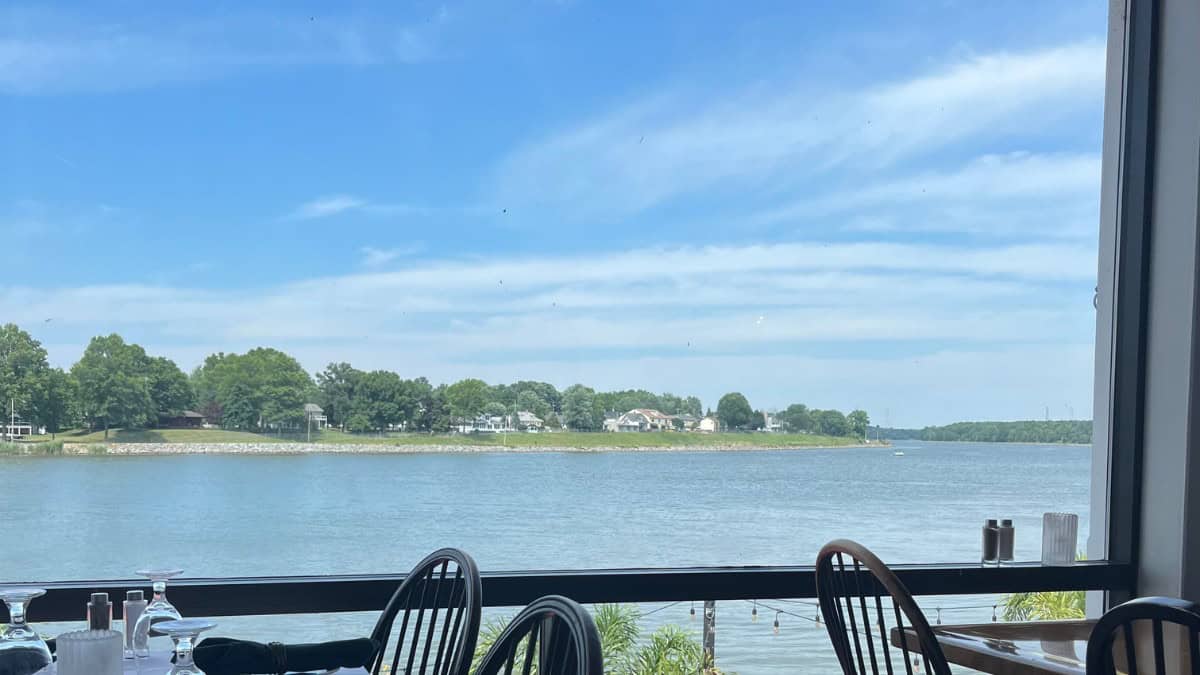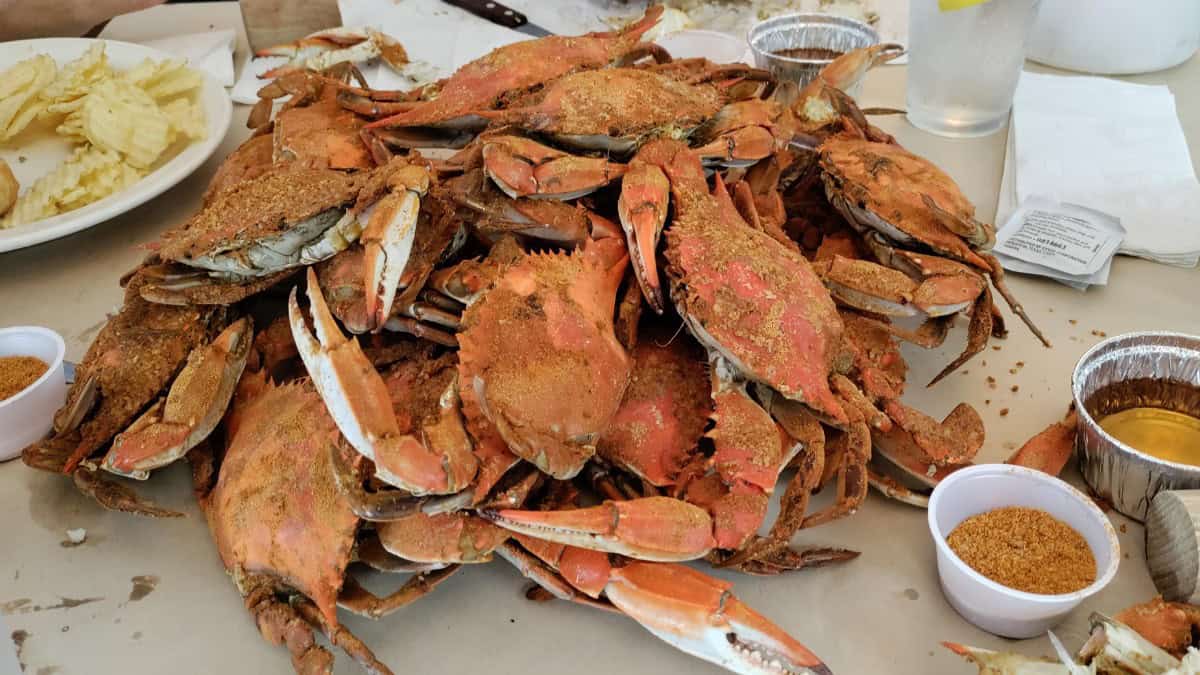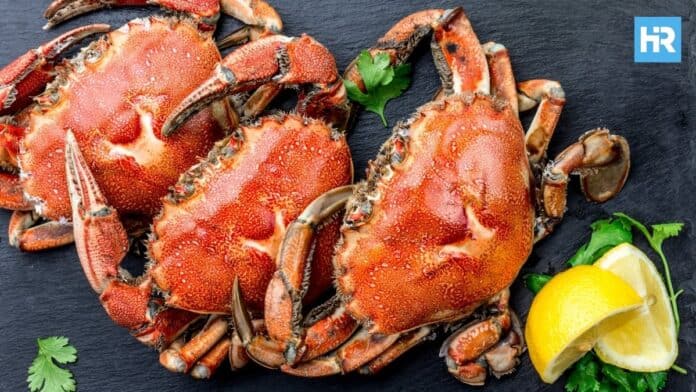This part of our travel series is all about the culinary experience, and our reporter Lucia will be featuring the tasty delights that Maryland is known for.
When people ask me what food Maryland is known for, I think of the first time I heard the satisfying crack of a wooden mallet against a blue crab shell. The pungent scent of Old Bay seasoning hung in the humid air. Newspaper-covered tables were dotted with small mounds of discarded shells.
These are the sounds and smells of a proper Maryland crab feast. And after three weeks of exploring the state’s food scene, they’ve become as familiar as an old friend’s laugh.
My Journey to Maryland’s Food Scene: Discovering What Food Maryland Is Known For
What food is Maryland known for? That question echoed in my mind as I stepped off my flight at Baltimore-Washington International, my notepad already filled with ambitious plans to taste every local delicacy I could find.
Planning the Trip: From Seafood Dreams to Reality
The September breeze carries the scent of Old Bay seasoning as I settle into my waterfront perch at the Annapolis Waterfront Hotel, Autograph Collection, where nightly rates provide front-row seats to Annapolis’s storied maritime culture.
From my balcony, I watch watermen return with their daily catch, their boats laden with the bounty that has made this region a pilgrimage site for seafood enthusiasts.
The choice of accommodation might seem indulgent to some, but for a food writer seeking to understand Maryland’s culinary soul, there’s no better vantage point than this historic harbor, where centuries of fishing traditions converge with modern gastronomy.
Through my window, sailboats dot the Chesapeake Bay like white petals on blue silk, and the distant calls of seabirds seem to beckon me toward my next meal.
Already, I can tell this assignment will be less about simple sustenance and more about understanding a way of life that’s been preserved in butter, seasoned with tradition, and served on beds of ice for generations.
Arrival in Annapolis: A Feast for the Senses
The briny air hits me before I even exit BWI Airport’s terminal, a sensory preview of the maritime feasts that await. After a brief drive through Maryland’s rolling countryside, I find myself in Annapolis, where history and gastronomy intertwine along centuries-old streets that echo with tales of watermen and their catches.
Determined to discover Maryland’s culinary treasures, I waste no time seeking out my first authentic Chesapeake meal. Along City Dock, where 18th-century brick buildings stand sentinel over the harbor, I slip into a weathered crab house.
The wooden tables, scarred by countless mallets, tell stories of feasts past. When my server deposits a paper-covered tray of steaming blue crabs, the aroma of Old Bay seasoning rises like incense.
My first crack of the crimson shell reveals tender meat that tastes of sweet summer tides—a flavor that has drawn seafood pilgrims to these shores for generations.
Chesapeake Bay: Where the Real Magic Happens

The rhythm of the bay comes alive at dawn as I board a weathered fishing vessel, joining the daily ritual that has sustained Maryland’s seafood legacy for generations. At $75 per person, a half-day excursion with Waterman’s Adventures offers more than just a tourist experience—it’s an immersion into the lifeblood of Chesapeake culture.
The morning mist still clings to the water as our captain, a third-generation waterman, guides us through channels where his grandfather once harvested the bay’s bounty. His calloused hands demonstrate the art of pulling crab pots—a practice unchanged by time.
When the first pot breaks the water’s surface, dozens of blue crabs scatter sunlight from their shells, a glittering promise of the feast to come. By afternoon, these very crabs will grace tables across the region, completing a farm-to-table journey that spans mere hours and centuries of tradition.
Beyond Crab: A Culinary Adventure

While Maryland’s steamed crabs command the spotlight, a deeper exploration of the state’s culinary landscape reveals treasures that rarely make the tourist brochures.
In a weathered diner where Baltimore’s dock workers have gathered for generations, I discover the coddie—a modest $5 fishcake that speaks volumes about the city’s working-class roots. Served unpretentiously on crackers with a swipe of yellow mustard, it’s a reminder that great food often comes without fanfare.
The Finale: A Delicious Goodbye
The sun dips low over the Chesapeake as I savor my final taste of Maryland’s culinary heritage. Before me sits a masterpiece of confectionery tradition: the official state dessert, Smith Island cake. Each delicate layer tells a story of immigrant bakers and watermen’s wives who, generations ago, crafted these towering sweets for their seafaring husbands.
As my fork slides through eight gossamer-thin layers of golden cake, each separated by ribbons of chocolate frosting that gleam like the bay at midnight, I reflect on a journey that has revealed not just flavors but the very soul of Maryland’s coastal culture.
Tips for Future Travelers
- The Bottom Line: Plan for $100-150 daily to properly explore Maryland’s iconic dishes. From haute harbor restaurants to humble crab shacks, this budget ensures you’ll taste the full spectrum of local flavors.
- Perfect Timing: The locals’ secret? Visit between May and early October when the Chesapeake yields its sweetest blue crabs and waterfront festivals abound.
- Transportation Tips: While Baltimore and Annapolis offer excellent public transit, a rental car proves invaluable for discovering hidden gems like Rock Hall’s dockside eateries and Smith Island’s family bakeries.
For those wondering what food Maryland is known for, my notebook contains three weeks’ worth of delicious answers. This state’s cuisine isn’t just sustenance; its maritime history served on a bed of ice, seasoned with tradition, and garnished with unmatched hospitality.
Maryland’s Food Adventure: What to Know Before You Go
Before you embark on your own Chesapeake culinary expedition, let my sauce-splattered journal be your guide.
From the proper technique for wielding a crab mallet to knowing which months yield the sweetest blue crabs, this seasoned food reporter’s discoveries will help you navigate Maryland’s rich gastronomic waters like a local.
Dress for the Occasion: Coastal Comfort
“Leave your designer clothes at home,” veteran waterman Jimmy Peters warns me with a knowing smile at his dockside crab house. After ruining my favorite silk blouse at my first Maryland crab feast, I quickly learned the unwritten dress code of Chesapeake dining.
Here along the bay, pearl necklaces give way to plastic bibs, and fine linens are replaced by brown paper tablecloths. Despite the house-provided protection, that signature orange-red Old Bay seasoning has a way of finding its mark – a badge of honor among seasoned crab enthusiasts.
My advice? Channel your inner local with washable, comfortable attire. In Maryland’s seafood sanctuaries, the most sophisticated accessory is a wooden mallet and a sense of adventure.
Bring Cash for Small Stops
Many of Maryland’s iconic seafood shacks and diners are charmingly old-school and may not accept cards. Having cash on hand ensures you can grab a quick bite, like a coddie or a crab cake, without hassle. While most sit-down restaurants take credit cards, tipping in cash is always appreciated.
Crab Feasts and Beyond: What to Expect
Steamed blue crabs are the highlight, and they’re typically served by the dozen. The process is messy but fun—you must crack shells with a mallet and dig for meat. If that’s not your style, opt for crab cakes or Maryland crab soup.
On the Chesapeake Bay, I recommend taking a guided crab-fishing tour. It’s both educational and entertaining, and you’ll gain a deeper appreciation for the local seafood industry.
Just be prepared for early mornings—crabbing starts at sunrise.
What I’d Do Again (and What I’d Skip)
If I could relive the trip, I’d start with a crab feast in Annapolis again. The communal vibe of cracking crabs at a waterfront shack was unmatched. The Smith Island cake was also a highlight, and I’d even consider visiting Smith Island itself next time to see where the famous dessert originated.
One thing I’d skip? Trying to fit in too many food stops in one day. The portions are generous, and Maryland’s rich flavors are best enjoyed at a leisurely pace.
Final Thoughts: A Memorable Culinary Adventure
Maryland’s food scene exceeded my expectations. It’s not just about the flavors—it’s about the experience of connecting with local traditions and savoring each bite. Learning about what food is Maryland known for was a fun – and delicious experience. I’d absolutely do it again, and next time, I’d bring friends to share in the feast.
Maryland’s Food Scene – FAQs
When is the best time to visit Maryland for seafood?
Late spring to early fall is ideal, as it’s prime crab season.
Is it expensive to eat in Maryland?
Budget around $100-$150 per day for meals, depending on where you dine. Casual crab shacks are more affordable than upscale seafood restaurants.
Do I need to book crab tours in advance?
Yes, especially during peak season. Many tours fill up weeks in advance.
Can I eat crab if I don’t know how to crack them?
Absolutely! Many places offer pre-cracked options like crab cakes or soft-shell crab dishes.
Is Old Bay seasoning really that popular?
Yes! It’s a Maryland staple, used on crabs, fries, and even popcorn.






